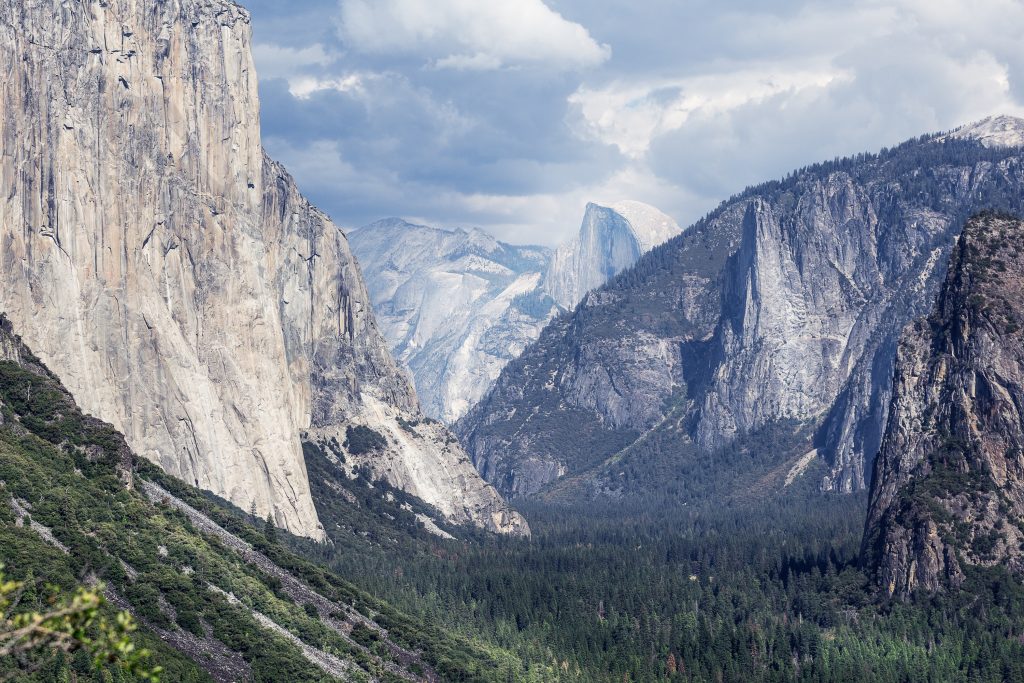July 2019
 It’s time for another philosophical side trip into the murky areas of my own consciousness. Whether or not you go along for the ride hangs on your ability to locate the X on your browser window LOL. The topic under examination today is a particular stance of beingness I find appropriate to my phase of life — I’m a retired old f*rt, still with plenty of mileage on the tires knock on wood, but there’s no going backward over travelled roads, the only way is forward and we all know what Emerald City lies at the end of that yellow brick road, don’t we. The Big D. It’s not something we think about very often and certainly forms no common topic of conversation. It has occupied my thoughts more and more since I retired in 2015 and at this point, nearly five years on, it’s time to put some of those musings down in black and white. I want to consider Heidegger’s concept and contort it to my own purposes as a pathfinder for my journey forward. That’s the point of this post. I’ll be sorting things out as I go along, as I always do.
It’s time for another philosophical side trip into the murky areas of my own consciousness. Whether or not you go along for the ride hangs on your ability to locate the X on your browser window LOL. The topic under examination today is a particular stance of beingness I find appropriate to my phase of life — I’m a retired old f*rt, still with plenty of mileage on the tires knock on wood, but there’s no going backward over travelled roads, the only way is forward and we all know what Emerald City lies at the end of that yellow brick road, don’t we. The Big D. It’s not something we think about very often and certainly forms no common topic of conversation. It has occupied my thoughts more and more since I retired in 2015 and at this point, nearly five years on, it’s time to put some of those musings down in black and white. I want to consider Heidegger’s concept and contort it to my own purposes as a pathfinder for my journey forward. That’s the point of this post. I’ll be sorting things out as I go along, as I always do.

I never thought the day would come when I’d take up phenomenology to do anything of practical importance. I waded through some of it in graduate school and came to the conclusion it was a semantic quagmire requiring far too much work to attain understanding of what Heidegger was on about. Bad return on investment, in other words. So I hobbled my way through what I needed to do for my coursework and left it at that. I’ve not gone back to it lo these many decades until the Big R happened (retirement) and I began to think about things differently. The phrase “Das Dasein zum Tode” kept popping into my mind and whenever it did I thought, “Yes, there’s something to that, what was it again Heidegger said?” When I dug into the matter I discovered that I’d remembered the phrase wrongly. It’s “Sein-zum-Tode.”
The presence or absence of a single syllable may not seem like much — two letters, “da” — but with Heidegger a single syllable can end you up in a parallel universe where white is black and black is white. “Dasein” and “Sein” are two very different things in Heidegger’s phenomenology, although they’re both translatable as “being.” So I’d have been laughed off the stage had I uttered in academia the phrase I remembered incorrectly. “OMG he doesn’t even know the difference between Dasein and Sein, I’ll bet he went to [gasp] a community college …” But all that’s well behind me. The only thing that happened as I sat pondering my mistake was that a coconut fell off the palm across the way. Maybe that’s Heidegger’s answer to Newton’s apple. Fortunately I wasn’t under the palm when it fell. If I had been I’d probably now be well on my way to becoming a hermeneutic phenomenologist. 🙂
In a linguistic environment as labrynthine as that of Heidegger we could spend weeks going over terminology and sorting out subtle differences between concepts. Here’s an example of the linguistic quagmire Heidegger created, from an article by Omar S. Alattas (here):

That gives you an idea of the Heideggerian word salad. But we’re regular Joes and we have places to go and things to do. So let me cut to the chase and bring forward the concept of Being-Toward-Death as explained in a very fine article by Simon Critchley in The Guardian (here), that journalistic repository of wonderments that nobody (in the USA) would ever expect to find in a newspaper. Good on ya, Brits. Keep up the good work. Here’s the info:
… For human beings, time comes to an end with our death. Therefore, if we want to understand what it means to be an authentic human being, then it is essential that we constantly project our lives onto the horizon of our death. This is what Heidegger famously calls “being-towards-death”. If our being is finite, then an authentic human life can only be found by confronting finitude and trying to make a meaning out of the fact of our death. Heidegger subscribes to the ancient maxim that “to philosophise is to learn how to die”. Mortality is that in relation to which we shape and fashion our selfhood.
If only Heidegger could have written so clearly … Anyhoo, that’s the basic jist of it. The key words are “authentic” (eigentlich) and “being” (Sein). What we’re trying to do is to get down to the brass tacks of living. I’m not sure I fully ascribe to the notion that “to philosophise is to learn how to die” — I don’t think you need any aces in the hole to accomplish that bit, it kind of takes care of itself. What’s important is to learn how to live with death as the lowest common denominator of life — especially if you’re in your golden years and heading toward the Big D on a much nearer horizon than when you were a strapping young thing. That’s what I want to do with Heidegger’s concept: use it as a waymarker on my journey forward to the Big D. I’m going to hold to my error and change Heidegger’s phrase to what I inaccurately remembered, which I’ll translate as Beingness-Toward-Death — “Dasein zum Tode.” It’s a tweak that would horrify a hard-core hermeneutic phenomenologist, but less than .000001% of the global population even knows what such a creature is, so we’re good. 🙂

In my own reductionist vocabulary I call it “taking death on board.” Death becomes a fixture in the conceptual landscape of daily thought. But in contrast to Heidegger’s conception of being-toward-death as a potential that defines actual beingness (Dasein), I think it’s appropriate to bring death into the picture as a concrete center of gravity. It’s part of beingness, not something toward which beingness moves. True, it remains potential until it actually happens, but there’s nothing unknown about that happening — you know full well as you sit watching reruns of The Golden Girls that when the Big D comes the party is permanently over. So the reality of death is as fixed as it can possibly be in your consciousness as the living being you are. That’s the shift in Heidegger’s concept I’ve made for myself because it makes sense in lived experience.
It’s all very well to have your being moving toward death (that you never think about) when you’re in, say, your thirties. I remember what that was like — yes, death is in your vocabulary but it has no reality to you, even if somebody you know kicks the bucket. The human being is blessed with a sense of individual immortality until time scotches that stance and forces the issue of death on one’s awareness. I think that’s the way it should be — it would be too limiting otherwise because the future of a thirty-something is too long as he or she looks ahead to a normal lifetime. For someone my age the future is much shorter and the reality of death much more immediate. Adopting the “death on board” approach becomes sensible because it’s practical to a person in the latter phase of life. It amounts to getting your conceptual ducks in a row so you use your time strategically.
My preference for “beingness” stems from its concreteness. Beingness means a body walking around on the Planet doing things. It stops when death happens. Being with a capital B goes far beyond the scope of an individual walking around doing stuff. It could be construed as the fact of existence itself that encompasses the entire Universe. That expansiveness would of course appeal to a German philosopher, but for regular Joes it’s a bit much to bite off and chew while you’re walking around in the grocery store trying to remember what’s on that list you forgot at home. So my consideration of the concept applies only to the individual, not to the collective or to the Universal. I’ll leave that to the hermeneutic phenomenologists to sort out.

That the change in my own awareness began with retirement comes as no big surprise. That milestone brings all kinds of changes in attitudes and thinking. I was surprised to find the factor of death gradually taking on a much more immediate nature until it finally became central to my thinking. My elder sister passed away last year and you might think something like that was the trigger, but it wasn’t. I was busy incorporating death into my conceptual repertoire before her demise. The fact that I’d assimilated it into the fabric of my thought made it easier to deal with her passing, truth be told. The sense of finality I’d developed for myself made it simpler to deal with hers.
As I sit here and think about it I’m not able to distinguish easily how much of that change has been voluntary and how much is the result of the force of circumstance. The Big D comes whether you want it to or not, so by taking it on board are you being proactive or reactive? Just the sort of distinction Heidegger would write three books about without coming to a conclusion. Let me forestall such exaggerated introspection and say for the record: it’s both proactive and reactive. You can’t have one without the other in this particular situation (OMG how Hegelian LOL) because you have the Big D on your plate and you gotta do something with it. Make lemonade from lemons? It seems an unlikely option but I think that’s the right thing to do.
The inevitability of death is always present, the only thing about it that changes is our perception of it. Death has always been as potential for me in the past as it is in the present, but the circumstances of my life have changed to bring death into a different relationship to my present. As I age I know that the potential for death increases. That’s a duuh moment if ever there was one. So thinking strategically about death is part of a strategy for living, not for throwing up one’s hands and waiting for the Grim Reaper to show up. The major question is what role the Grim Reaper is to play in the business of living. Being the jaunty fellow I am I want to give it an upbeat spin. I rather like the idea of giving death the finger by figuring out how to make its presence in life have positive value. So that’s been my goal and I’ve managed to get part of the way there.

What are the practical aspects of beingness-toward-death? It’s a prod, primarily. I think about it every day now and ask myself, what do I want to do? I now project myself into the future with the Grim Reaper at my side, not somewhere out in a hazy future. I don’t know when the party will end, but it’s gonna be sooner rather than later as far as decades go. I’m no longer in the position where I can put it off until I’m retirement age. 🙂
Beingness-toward-death prods me to make the most of life. It urges me to organize things so that I get the most out of the time remaining. That may sound desperate but it’s the opposite, actually. At this point death is as much a positive incentive to get off my duff and do things as is native excitement — in some cases more so. It’s all too easy to slip into a rut when you’re not forced by circumstance to get out and go, but death is there pointing at the clock saying, “Time’s a-wastin’, bud, get off your backside and get moving.”
After five years of practice in this new stance it’s become second nature now. In a way it’s like including what was before a hidden variable in the equation of life — hidden only because that’s how we choose to handle it in our culture. At this life stage it makes all the sense in the world for it to become a calculated variable. It would be nice if life were so tidily mathematical that one could know the solution to the equation before the end of the party. From a planning standpoint it would make things much easier to know what to do when — do I spend my savings down over the next five years because I know I’ll be toast when the sixth comes along? Impossible to say. I don’t know who set that up in the Bureau of Incarnational Design but I intend to have strong words once I get past the Pearly Gates, trust me on that one, Bridget. It’s hard enough to keep things straight, having no reliable timetable to go by puts things into the crap shoot zone. Hardly an organized way to proceed, IMHO, and certainly as far from ladylike conduct as thought may be.
The results of adopting the stance have been very positive, I’m happy to report. I’ve gotten all manner of ducks in a row at this early stage of the retirement game. I feel well positioned to move into any number of different future scenarios — kind of like multiple games of Let’s Make A Deal going on at the same time. Whatever the number is of the door that opens, I’ll be ready. And who do I have to thank for that state of readiness? The Big D himself. Who’d have thought he’d turn out to be such a chum? 🙂

